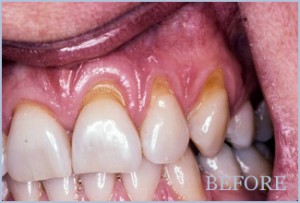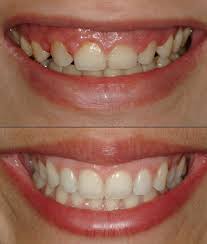Header logo
header top contact widget
periodontal plastic surgery
Advantages Of Dental Implants In The Hands Of A Periodontal Specialist
Posted on Jun 14, 2018 by William J. Claiborne, DDS MS
The American Academy of Periodontology defines a Periodontist as: “A periodontist is a dentist who specializes in the prevention, diagnosis, and treatment of periodontal disease, and in the placement of dental implants. Periodontists are also experts in the treatment of oral inflammation. Periodontists receive extensive training in these areas, including three additional years of education beyond dental school. They are familiar with the latest techniques for diagnosing and treating periodontal disease, and are also trained in performing cosmetic periodontal procedures.”
(https://www.perio.org/consumer/what-is-a-periodontist)
For people who are considering dental implants to replace missing teeth, a Periodontist brings a number of advantages to the table, many of which you may not be aware. For those who pursue the requirements for the periodontology specialty, most devote over 11 years to educational, clinical and specialty training once they’ve graduated from high school.
A Periodontist must first complete the requirements to become a dentist by attaining a bachelor’s degree before entering dental school, which typically requires 4 years of college. He or she then continues with f urther education and training to advance their skills in the prevention, diagnosis and treatment of problems related to the structures that support and surround the teeth. This is typically an additional 4 years.
urther education and training to advance their skills in the prevention, diagnosis and treatment of problems related to the structures that support and surround the teeth. This is typically an additional 4 years.
With a dental degree in hand, the periodontist candidate begins a graduate program after successfully completing a rigorous National Board Exam.
Periodontal training is typically an additional 3 year period. The advanced training of a periodontist focuses on the development of gum and bone diseases as well as how they relate to other systemic diseases. They must participate in clinical trials of new therapies while learning intricate aspects of dental implants and other oral surgical techniques.
Once the educational phase is completed, licensing is required. The U.S. requires all those in the dental profession to pass written and hands-on examinations before they can begin in professional practice.
Once in practice, many Periodontists tackle the added requirements to become Board Certified by the American Board of Periodontology. A Board Certified Periodontist is “one who has made significant achievements beyond the mandatory educational requirements of the specialty and who is certified by the American Board of Periodontology.” (https://abperio.org/)
Board Certification requires: (1) Passing oral and written exams on all phases of periodontal disease and its treatment, including dental implants. (2) Presentation of detailed reports on a broad range of actual treatment. Once certified, Periodontists are required to take significant hours of continuing education on an annual basis and must be re-certified every 3 years to maintain Board Certification.
While some general dentists perform dental implant diagnosis and placement procedures in their practice, putting your care in the hands of a specially-trained periodontist can help you enjoy an optimal outcome with a lower risk of implant failure. And, implants can fail!
For a successful result, a periodontist uses specialized training and understanding to carefully assess the best type of implant system for you. He or she will treatment plan the most ideal positioning of the implant selected with a particular respect for the surrounding gum tissues.
It may be tempting to consider a “cheap” dental implant offer or a “one-stop clinic” for the treatment. However, your overall comfort and long-term success should be the guiding force in making your decisions in tooth replacement.
Begin with a consultation appointment. Call 828-274-9440. I’ll be happy to discuss the dental implant type that may work best for you and the process involved. We can also discuss anticipated fees and payment options, if desired.
Dental implants, when properly chosen, placed, and cared for, are designed to last your lifetime. In the proper hands, your new smile will be an everyday joy, every day of your life!
Proper Bite Alignment Necessary To Support Oral Health & Implant Success
Posted on Mar 27, 2018 by William J. Claiborne, DDS MS
As a Periodontist, I specialize in treating all stages of gum disease and perform a number of procedures that involve the gum tissues (including crown lengthening and repair of ‘gummy smiles‘). My specialty also includes advanced training in the diagnosis and placement of dental implants.
So, why would I be so concerned with bite alignment?
In my profession, I work with a number of general dentists and dental specialists. Together, we create a ‘team treatment’ approach designed to fulfill each patient’s unique oral wellness needs. While I do not provide orthodontic realignment services or claim to specialize in that area, I do understand the need for having properly aligned teeth.
I see a lot in an adult’s mouth that isn’t necessarily obvious to the patient, yet has a tremendous impact on overall oral health, especially in their potential to AVOID problems.
First, the position of the teeth is more important than how they come together and create an attractive smile. Teeth that become crowded or crooked tend to form tight angles that make it difficult for a toothbrush to get into.
These nooks can easily become breeding grounds for oral bacteria. The accumulation of oral bacteria can lead to the formation of cavities and the development of gum disease.

Example of gum recession
Also, know that each tooth helps to support neighboring teeth, providing an abutment to keep other teeth in their positions. This is why it is so important to replace a missing tooth.
Without it, the teeth on either side can tilt out of their proper positions. Additionally, the tooth above (or below) can grow longer. These abnormal positions of teeth can contribute to a number of issues.
When a bite is misaligned, gum recession can occur. This is due to the unnatural pull of the gums around the base of teeth. Without this tight seal, oral bacteria can more easily penetrate below the surface of the gum line. Bacteria that reaches tender tooth root segments can create decay and periodontal disease.
Another problem with improperly aligned teeth has to do with dental implants. A ‘bad bite’ can lead to problems that include night-time clenching and grinding. A dental implant is placed in the jaw bone, the same sturdy foundation as natural tooth roots enjoy. However, a newly placed implant can be put at dire risk when surrounding teeth are interfering.
A dental implant is placed in the jaw bone, which serves as a replacement tooth root. During the first 3 – 6 months, the bone is growing around it, securing it in place. It is during this time that an implant is most vulnerable to the forces that clenching and grinding exert.
However, all teeth are at risk when clenching and grinding occur – not just those attached to an implanted post. ‘Bruxing’ (as it is known) can lead to chipped, broken and fractured teeth. It can also transfer stress and strain to facial, neck and shoulder muscles.
A number of people who have frequent headaches and migraines are surprised to discover the originating source is actually their TMJ (jaw joints). This typically occurs when a bite is misaligned. This can lead to a domino effect that reaches these joints. As a matter of fact, ear ringing, dizziness and difficulty opening the mouth fully are common symptoms of TMJ disorders that people are often unaware.
So, as a periodontist, I see how bite misalignment can cause the gums to recede and also how the potential for implant success can be affected. Simply, a correct bite is necessary for good oral health. Having it can help you avoid a long list of problems.
If gum tenderness or bleeding gums seems to occur in the area of crooked teeth, then let’s evaluate the issue. Or, if you’re considering dental implants but suspect you clench or grind your teeth, we’ll discuss ways you can achieve your smile goals and protect your investment.
Call 828-274-9440 to schedule a consultation.
Correcting A Gummy Smile With Beautiful Results!
Posted on Sep 06, 2017 by William J. Claiborne, DDS MS
A smile says a lot. A warm, genuine smile sends a message to others of acceptance and joy. A beautiful smile also complements appearance and can relay an impression of confidence, happiness and openness.
As a Periodontist, I treat the soft tissues of the mouth in addition to placing dental implants and treating gum disease. As an expert in oral gum tissues, I have advanced training that enables me to create gum tissue contours to give a natural appearance and provide healthy seals around teeth.
For people who have a ‘gummy smile,’ too much gum line is visible above the upper teeth in a full smile. While this trait does not interfere with the ability to have and maintain a healthy smile, for many, it causes them to ‘hold back’ rather than smile fully. Some people cover their smiles with a hand or try to smile with lips only.
For many with a gummy smile, the deterrents to having it repaired are (1) cost; (2) treatment discomfort; and (3) treatment time. However, in consultations with patients, I explain how modern techniques ensure exceptional comfort and reduce healing time. Often, once the patient is better informed as to what to expect, they are receptive to proceeding.
Gum re-contouring is the procedure to correct a gummy smile, referred to as a ‘gingivectomy.’ It is performed to remove the excess gum tissue that arches over the teeth most visible in a smile.
To begin, we numb the gum tissues and carefully trim the excess. As a Periodontist, I take specific measures to ensure a natural looking arch remains over the teeth while preserving the natural points that ‘dip’ between each tooth.
It’s normal to experience some tenderness or swelling after the procedure, however, most patients do fine by applying an ice pack off and on for the first day. In most cases, over-the-counter pain medications are sufficient, however, we make prescription strength options available to ensure comfort during the healing process.
Healing time depends on each individual and can vary from a few days to a few weeks. For patients who smoke, healing times are longer due to smoking’s drying effect on gum tissues.
Most gingivectomies are followed by crown lengthening procedures that enhance the appearance of the teeth most visible in a smile. Crown lengthening uses porcelain veneers or crowns to give a beautiful, even smile line.
Treatment fees depend on the extent of the condition and whether crowns or veneers will be applied following treatment. In either case, beautiful results can occur, helping the individual who once ‘held back’ to smile confidently and reveal a more outgoing, vibrant personality!
A healthy smile is a benefit to our overall health. An attractive, confident smile is beneficial to our self-image, helping us to feel good from the inside out! Call 828-274-9440 for a consultation to discuss a gingivectomy and what is recommended for your specific need.
The Advantages Of Seeing A Periodontist
Posted on Jul 13, 2017 by William J. Claiborne, DDS MS
Some patients’ periodontal needs can be managed by their general dentist. However, as signs of periodontal disease grow, coupled with research that indicates a correlation between periodontal disease and other chronic diseases, periodontal treatment may resolve at a more effective level through the expertise of a trained specialist. Patients who have moderate or severe levels of periodontal disease, or patients with more complex cases, are often best managed through ‘team treatment’ between a general dentist and periodontal specialist.
What Is A Periodontist? The American Academy of Periodontology explains a periodontist as a “dentist who specializes in the prevention, diagnosis, and treatment of periodontal disease, and in the placement of dental implants. Periodontists are also experts in the treatment of oral inflammation. Periodontists receive extensive training in these areas, including three additional years of education beyond dental school. They are familiar with the latest techniques for diagnosing and treating periodontal disease, and are also trained in performing cosmetic periodontal procedures.
“Periodontists often treat more problematic periodontal cases, such as those with severe gum disease or a complex medical history. Periodontists offer a wide range of treatments, such as scaling and root planing (in which the infected surface of the root is cleaned) or root surface debridement (in which damaged tissue is removed). They can also treat patients with severe gum problems using a range of surgical procedures.
In addition, periodontists are specially trained in the placement, maintenance, and repair of dental implants.”
On their web site, the American Academy of Periodontology lists the symptoms of gum disease as:
- Red, swollen or tender gums or other sore areas in your mouth
- Bleeding while brushing or flossing
- Gums that recede or pull away from teeth, causing the teeth to look longer than before
- Loose or separating teeth
- Pus pockets between your gums and teeth
- Persistent bad breath
- A change in the way your teeth fit together when you bite
- A change in the fit of partial dentures
Additionally, the site features an explanation of the various stages of gum disease (https://www.perio.org/consumer/types-gum-disease.html).
Please know that you do not have to be referred to our office for care. While we want you to receive regular dental care once your mouth is restored to optimal health, we can suggest a general dentist for you if you do not have one.
Our goal is to ensure you are receiving the care you need to be healthy and to keep your natural teeth. As research continues to show, the health of your mouth has an impact on the health of your body.
Begin with a consultation or ask for a thorough periodontal exam by calling 828-274-9440. Let our specialty restore your teeth and gums to good health and confident smiles!
Recent Posts
Categories
Archives
- September 2024
- August 2024
- July 2024
- June 2024
- May 2024
- April 2024
- March 2024
- February 2024
- January 2024
- December 2023
- November 2023
- October 2023
- September 2023
- August 2023
- July 2023
- June 2023
- May 2023
- April 2023
- March 2023
- February 2023
- January 2023
- December 2022
- November 2022
- October 2022
- September 2022
- August 2022
- July 2022
- June 2022
- May 2022
- April 2022
- March 2022
- February 2022
- January 2022
- December 2021
- November 2021
- October 2021
- September 2021
- August 2021
- July 2021
- June 2021
- May 2021
- April 2021
- March 2021
- February 2021
- January 2021
- December 2020
- November 2020
- October 2020
- September 2020
- August 2020
- July 2020
- June 2020
- May 2020
- April 2020
- March 2020
- February 2020
- January 2020
- December 2019
- November 2019
- October 2019
- September 2019
- August 2019
- July 2019
- June 2019
- May 2019
- April 2019
- March 2019
- February 2019
- January 2019
- December 2018
- November 2018
- October 2018
- September 2018
- August 2018
- July 2018
- June 2018
- May 2018
- April 2018
- March 2018
- February 2018
- January 2018
- December 2017
- November 2017
- October 2017
- September 2017
- August 2017
- July 2017
- June 2017
- May 2017
- April 2017
- March 2017
- February 2017
- January 2017
- December 2016
- November 2016
- October 2016
- September 2016
- August 2016
- July 2016
- June 2016
- May 2016
- April 2016
- March 2016
- February 2016
- January 2016
- December 2015
- November 2015
- October 2015
- September 2015
- August 2015
- July 2015
- June 2015
- May 2015
- April 2015
- March 2015
- February 2015
- January 2015
- December 2014
- November 2014
- October 2014
- September 2014
- August 2014
- July 2014
- June 2014
- May 2014
- April 2014
- March 2014
- February 2014
- January 2014
- December 2013
- November 2013
- October 2013
- September 2013
- August 2013
- July 2013
- June 2013
- May 2013
- April 2013
- March 2013
- February 2013
- January 2013
- December 2012
- November 2012
- October 2012
- September 2012
- August 2012
- July 2012
- June 2012



